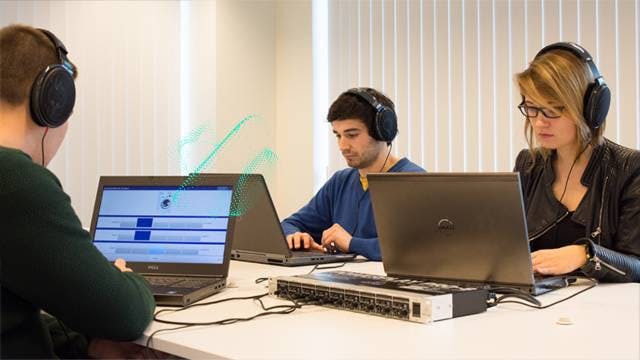製品が発する音は、顧客の「購入するか否か」の決定に大きな影響を及ぼす可能性があります。ブランドの価値を正しく伝える音を設計できるかどうかは、技術的な課題であるだけでなく、人間の心理にも関係する課題です。
人は、個人的な好みに基づいて製品の音を評価します。たとえば、ノイズ・エンジニアリング・チームの2人の同僚が真空製品の音を聞くと、それが心地良い音か否かで意見が分かれることがあります。そうなると、より良い音を発する製品を開発することが難しくなります。
官能評価試験は、音を聞いた人(企業の専門家、潜在的な顧客、経営陣)が受けた主観的な音の印象を客観的に評価して、製品設計プロセス中の意思決定を支援する手法です。
このウェビナーでは、次の内容を学べます。
- 音のサンプルの準備
- 被験者の数の選択
- 製品の特定の要件を満たす官能評価試験の設計
- 結果の分析
現実にはどのように機能するのか
リスニング試験で一連の音を再生して被験者に聞かせます。これは、音をグループ化してペアにする比較試験であることもあります。次に、被験者に音Aと音Bのどちらを好むか尋ねます。詳細に分析するために、音を「強い」、「信頼できる」、「心地よい」に分類してもらいます。被験者には、提案したカテゴリーに沿って音を評価してもらいます。
結果として得られた好みの評価、または最も支配的な属性を、客観的な尺度(テスト・プロトタイプのバリアントや音質メトリクスなど)に関連付けます。
官能評価試験の対象
音を発するオブジェクトはすべて、官能評価試験の対象となります。官能評価試験を最も一般的に使用しているのが自動車業界です。エンジンや乗員の動作で発生する音(ドア閉音、パワー・ウィンドウ音など)を、心地良い音かどうか評価して、改善点とします。自動車業界以外では、トラックの冷却ユニット、食器洗い機、コーヒーメーカー、芝刈り機などで、主観的な音の好みを調査しています。
音質ループを閉じる
製品の音質検証プロセスは、官能評価試験で完了します。音質メトリクスなどの客観的な尺度を被験者の主観的な意見と相関させることで、製品の音を開発、強化することがはるかに容易になります。これが、顧客の認識するブランドを形作ります。
講演者の紹介

Agnieszka Oltarzewska
音響製品マネージャー
Agnieszka Oltarzewskaは、シーメンスデジタルインダストリーズソフトウェアの音響製品マネージャーです。ポーランドのヴロツワフ工科大学で音響学の修士号を取得しています。現在はベルギーのルーヴェン在住です。Agnieszkaは、音質エンジニアリングと音響材料の特性評価のための産業間共通ソリューションを担当しています。
